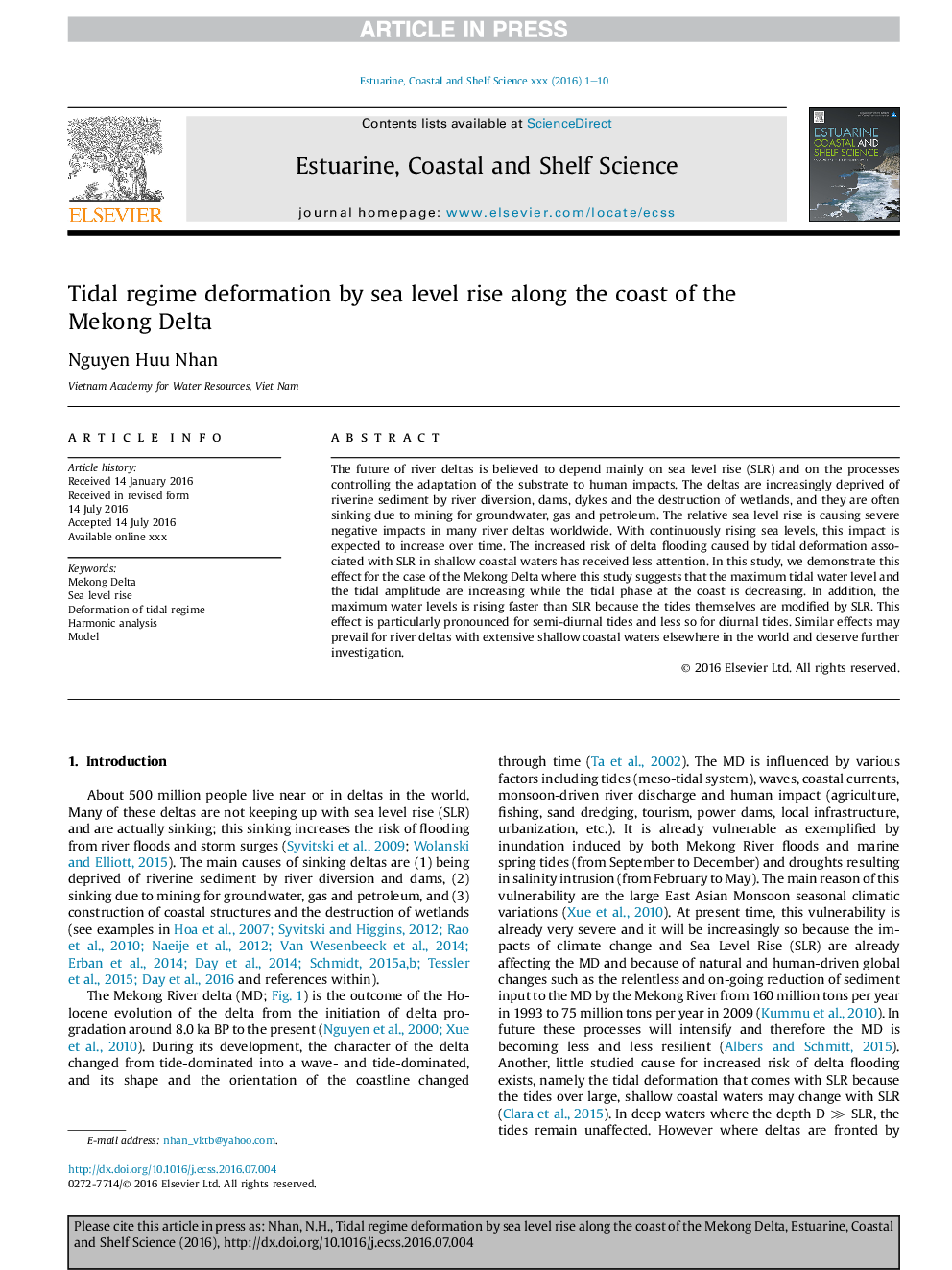| Article ID | Journal | Published Year | Pages | File Type |
|---|---|---|---|---|
| 5765379 | Estuarine, Coastal and Shelf Science | 2016 | 10 Pages |
Abstract
The future of river deltas is believed to depend mainly on sea level rise (SLR) and on the processes controlling the adaptation of the substrate to human impacts. The deltas are increasingly deprived of riverine sediment by river diversion, dams, dykes and the destruction of wetlands, and they are often sinking due to mining for groundwater, gas and petroleum. The relative sea level rise is causing severe negative impacts in many river deltas worldwide. With continuously rising sea levels, this impact is expected to increase over time. The increased risk of delta flooding caused by tidal deformation associated with SLR in shallow coastal waters has received less attention. In this study, we demonstrate this effect for the case of the Mekong Delta where this study suggests that the maximum tidal water level and the tidal amplitude are increasing while the tidal phase at the coast is decreasing. In addition, the maximum water levels is rising faster than SLR because the tides themselves are modified by SLR. This effect is particularly pronounced for semi-diurnal tides and less so for diurnal tides. Similar effects may prevail for river deltas with extensive shallow coastal waters elsewhere in the world and deserve further investigation.
Related Topics
Physical Sciences and Engineering
Earth and Planetary Sciences
Geology
Authors
Nguyen Huu Nhan,
